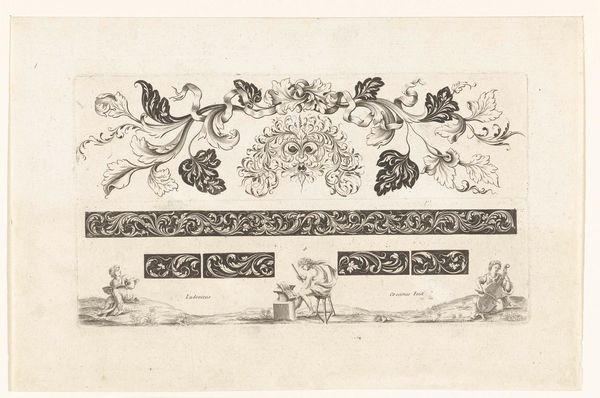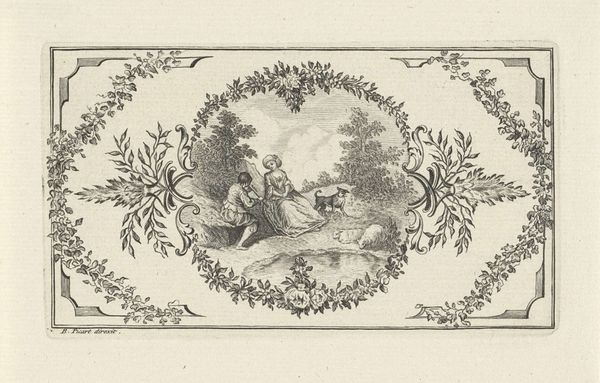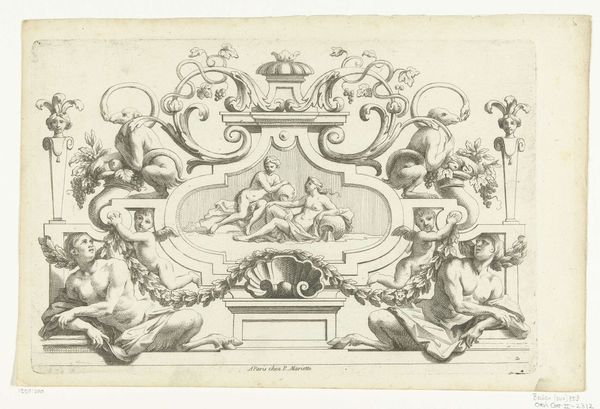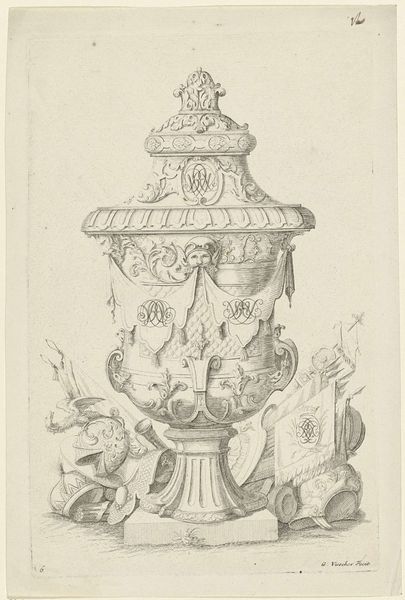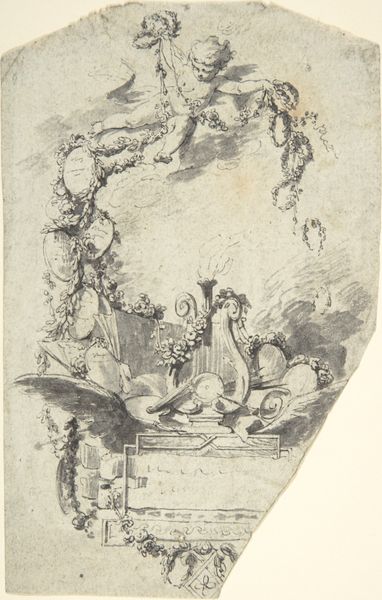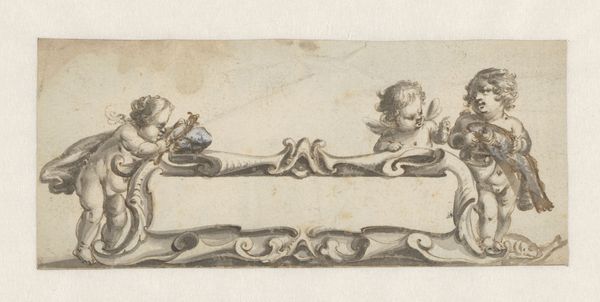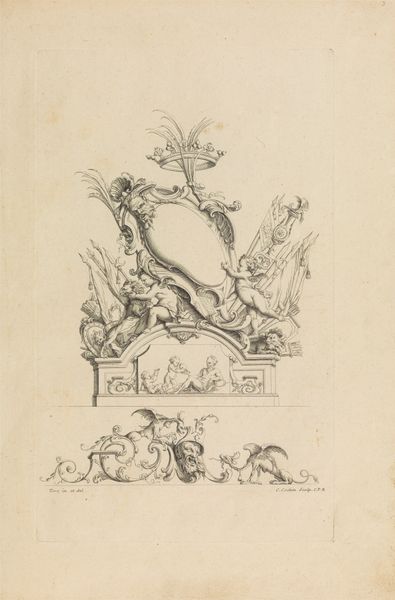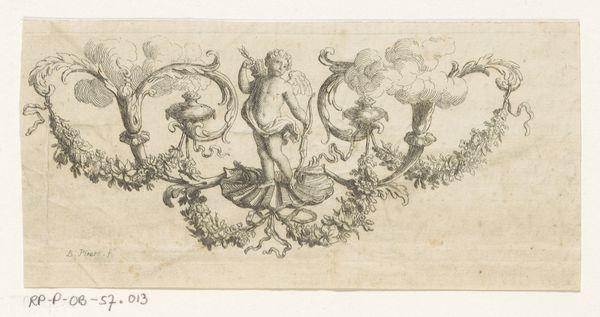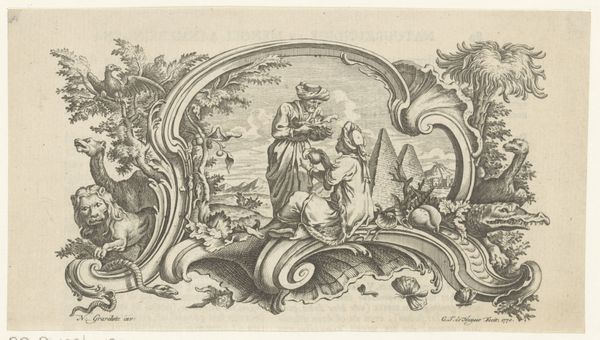
drawing, ink
#
portrait
#
drawing
#
quirky sketch
#
baroque
#
pen drawing
#
pen sketch
#
old engraving style
#
flower
#
figuration
#
personal sketchbook
#
ink
#
ink drawing experimentation
#
pen-ink sketch
#
line
#
pen work
#
sketchbook drawing
#
genre-painting
#
decorative-art
#
sketchbook art
Dimensions: height 63 mm, width 186 mm
Copyright: Rijks Museum: Open Domain
Curator: This pen and ink drawing at the Rijksmuseum is called "Vignet met vier putti en een bloemenmand", or "Vignette with Four Putti and a Flower Basket" by Frederik Ottens. It's dated somewhere between 1700 and 1749. Editor: My immediate impression is of lightness, even whimsy. It’s delicate, decorative, like something adorning a beautiful cake or a porcelain service. The monochromatic tones lend it a timeless quality. Curator: Absolutely. Vignettes like this were often used as decorative elements in books or prints during the Baroque era. Consider the broader context—Ottens was likely part of a workshop, producing imagery that circulated widely, shaping visual culture through these reproduced designs. The politics of display back then... who saw this and where really defined its meaning. Editor: The putti—those cherubic figures—holding a basket of flowers tap into deep wells of symbolism. Flowers often represent transience and beauty, and the putti themselves embody innocence and love. It's a rather loaded image, promising delight but hinting at the ephemeral nature of earthly joys. They create almost a cartouche. Curator: Indeed. The interesting thing is, while seemingly frivolous, this image played a role in reinforcing societal values. Genre scenes combined with such symbology provided both entertainment and implicit moral lessons. Art served a very clear purpose! Editor: I find it fascinating how these cherubic figures have persisted through centuries of art, evolving and adapting to different cultural contexts, yet always retaining this core association with purity and affection. There is real cultural power there. Curator: Yes, the longevity speaks to a deeper human desire, a need to visualize innocence and beauty, and that's not neutral. It’s why such imagery was useful and promoted for certain segments of society. Editor: It’s intriguing to consider this piece as not just a decorative object, but as a coded message about life and mortality delivered through the language of symbols. It asks the audience to really *look*. Curator: Right, these little designs, seen and unseen, propped up certain ideologies and disappeared others. That is the interesting power for me, always. Editor: And for me, the timelessness, despite it all.
Comments
No comments
Be the first to comment and join the conversation on the ultimate creative platform.
